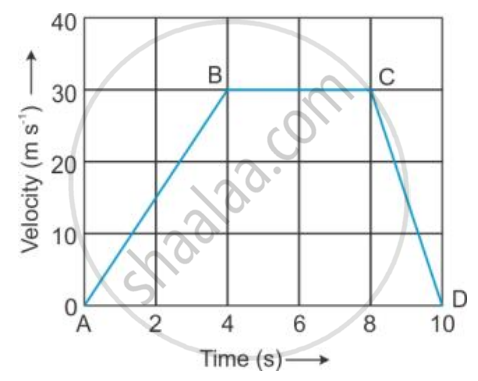Advertisements
Advertisements
प्रश्न
A car is moving with a velocity 20 m s-1. The brakes are applied to retard it at a rate of 2 m s-2. What will be the velocity after 5 s of applying the brakes?
उत्तर
Initial velocity of the car, u = 20 m/s
Retardation = 2 m/s2
Given time, t = 5 s
Let 'v' be the final velocity.
We know that, Acceleration = Rate of change of velocity/time
= (Final velocity - Initial velocity)/time
⇒ - 2 = `("v" - 20)/5`
⇒ - 2 × 5 = v - 20
⇒ - 10 = v - 20
⇒ - 10 + 20 = v
⇒ v = 10 m/s
Hence, final velocity = 10 m s-1.
APPEARS IN
संबंधित प्रश्न
Change the speed of 6 m/s into km/h.
Under which condition is the magnitude of average velocity equal to average speed ?
A train starting from Railway Station attains a speed of 21 m/s in one minute. Find its acceleration.
A motorcyclist drives from place A to B with a uniform speed of 30 km h-1 and returns from place B to A with a uniform speed of 20 km h-1. Find his average speed.
Figure shows the displacement of a body at different times .

Calculate the average velocity during the time interval 5 s to 9 s ,
[Hint : From 5 s to 9 s , displacement = 7 m - 3m = 4m]
The velocity-time graph of a moving body is given below in Figure

Displacement in each part AB, BC and CD.
A train travels with a speed of 60 km h-1 from station A to station B and then comes back with a speed 80 km h-1 from station B to station A. Find -
- The average speed
- The average velocity of the train.
A body moves from rest with uniform acceleration and travels 270 m in 3 s. Find the velocity of the body at 10 s after the start.
What are the uses of equations of motion?
